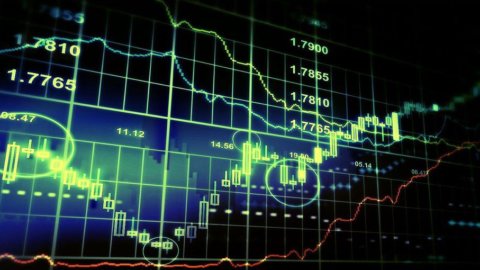The end of the calendar year is typically characterized by sharply depleted liquidity as well as reduced numbers of active traders in major global financial centres. Furthermore, many institutional players do not operate and report their positions to coincide with the end of the fiscal year.
This phenomenon of liquidity crunch it occurs in particular in the last days of November and above all in December. From here, the risk of high rollovers on the US dollar, yen and euro in particular.
Specifically there are three factors which could exacerbate this cyclical phenomenon of liquidity reduction:
- The broad market liquidity is much diminished. Not just on the bond front. The problem is obviously extensive
- Phenomenon of a domino effect on the currency market that is beginning to be glimpsed
- Critical events heralding possible increases in volatility in December, which can therefore amplify the risks for short-term investors.
1. Liquidity has plummeted in global financial markets
If you search for liquidity crunch on Google, you can easily find the presence of the most disparate reports from the most varied sources. One of these, drawn up by the New York Fed, shows the deterioration of the US government bond market, considered one of the safest assets in the world. Another illustrates how the PBOC (central bank of China) has flooded the domestic financial circuit with liquidity by virtue of potential "tightening" for the end of the year. There is of course no correlation between these two examples, but the common implication is quite clear: liquidity is increasingly tight for a wide range of financial institutions and markets. Most traders in the FX market have remained relatively protected from the reduction in volatility, particularly for the famous G7 currencies, although the effects are starting to take effect for the world's most traded currencies as well.
2. Liquidity risk has also extended to major currencies and Forex as a whole
A sudden widening of the Bid/Ask spread of the Eurodollar exchange rate on 12 November 2015 can be interpreted as a sign of the fact that the liquidity risk also closely affects the currency market. Available liquidity decreased significantly last year. Between 8.15 and 8.30 in the morning (New York time) on November 12 when the Eurodollar Bid/Ask spread widened by up to 10 pips in the interbank circuit, there was no unexpected news to justify a sudden fall of liquidity on this cross. It must be emphasized that it is the most traded exchange rate in the world. It represents roughly a quarter of the entire volume of the foreign exchange market, and the average spread within the interbank platform is 1,1 pips. It therefore appears rather inexplicable to believe that market conditions have rapidly deteriorated to such an extent as to lead to such a significant increase in the spread.
The point is clear: if the most traded currency exchange in the world suffers similar liquidity gaps, it is reasonable to expect that the less liquid ones (eg the so-called emerging currencies) could be undermined to a more than proportional extent by these market conditions. All this makes the end of the year particularly prone to further risks.
3. The month of December will be characterized by the Fed meeting, with the risk of very high volatility
The liquidity risk at the end of the year is already significant in itself, but it is undoubtedly exacerbated by a rather eventful economic calendar which can significantly amplify its effects. The combination of the meeting of the European Central Bank and the testimony of Fed Governor Janet Yellen in the US Congress, as well as the publication of the Non Farm Payrolls between 3 and 4 December concentrate the high volatility risks within a period extremely narrow.
Investors typically pay a volatility premium in the last weeks of the year, but the increase, this time, could be considerable. Liquidity and volatility risks could create the potential perfect storm. Given the conditions illustrated, caution for short-term investors is in order. Illiquid markets can undermine the profitability of operations. If also the lack of liquidity in the interbank sector were to reveal itself during violent market movements, theexecution could be greatly compromised. The shortage of liquidity could also have important repercussions in the interbank lending circuit, and this could result in high rollover costs in Forex.





